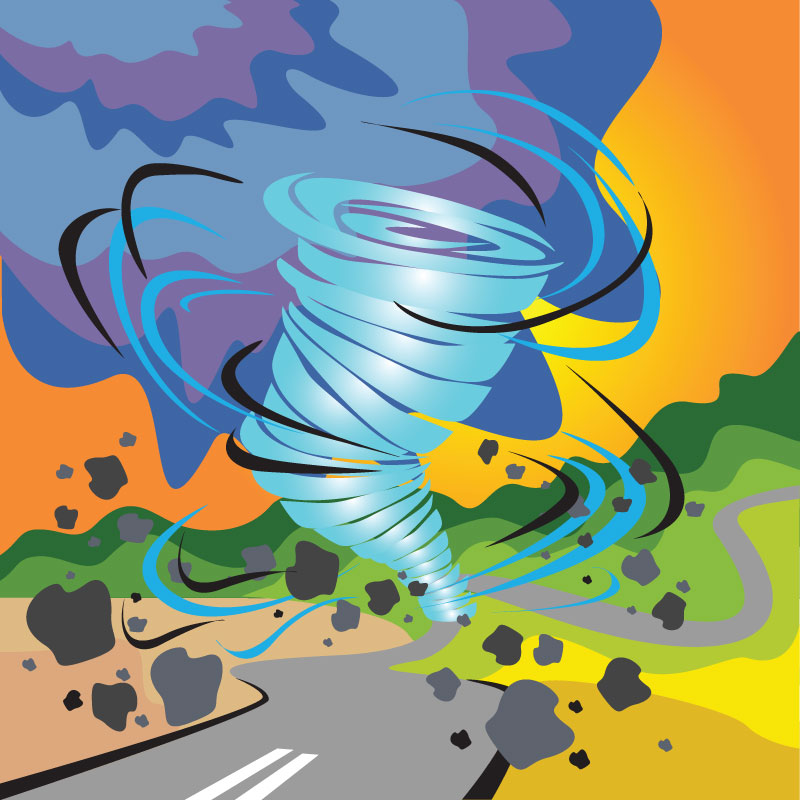
A hurricane is bearing down and your office has just received notice you have one hour to evacuate before flood waters sweep into the area. What do you do? Your office is damaged by fire and you’re forced to work from home for the next six weeks. Are you set up to do it? Have you ever read your company’s disaster recovery or business continuity plan?
“If you’re stumbling to answer any of these questions, it’s a sign you may not be prepared in the event a disaster strikes at your company. With Hurricane Sandy blasting the east coast of the United States in late October last year, the challenges of disaster preparedness and planning resurfaced for companies everywhere.
How do you possibly prepare for a crisis of that magnitude? What are you going to need so you can have it ready beforehand? Does disaster preparedness planning really make that much difference? Studies show that companies that successfully recover from disasters are typically those that have prepared for them. The problem is not enough companies are actively engaging in the planning process.
According to the 2009 Disaster Recovery and Business Continuity Survey by Agility Recovery Solutions and Hughes Marketing Group, small and medium-size businesses are woefully unprepared for disasters:
• Ninety percent of smaller companies (less than 100 employees) surveyed spend less than one day per month preparing and maintaining their continuity plans.
• One in five (22%) spend no time maintaining their plans.
• Comparatively, 20% of larger companies (more than 100 employees) spend more than 10 days per month on their continuity plans.
Disasters are not always the result of Mother Nature. Power outages, gas leaks, technology failures, equipment malfunctions, cyber security breaches and terrorist attacks are just a few of the many scenarios companies need to proactively prepare for. The 2009 survey also found that, in the two prior years, 52% of businesses experienced an unforeseen interruption, and 81% of these interruptions caused the business to be closed for one day or more.
Most assume someone else – management, a different department, other team members – are responsible for their company’s disaster planning. But disaster planning is everyone’s responsibility. Administrative professionals play a core role in office operations, which means you are in a unique position to add incredible insight and value to your company’s disaster recovery plan. With proper forethought and planning, admins can step in and become part of their company’s immediate response team that finds solutions and mobilizes resources if a disaster strikes. What can you do right now to ensure your company is prepared? These simple steps will help you take action immediately to create your own customized disaster recovery P.L.A.N.
Prepare your procedures
There is immense value in documenting standard office procedures for regular use. In an emergency, they become even more valuable because they allow others to step in and help you keep the office running. Plus, they relieve you of the pressure of remembering every detail.
You’ll also want to think about contingency procedures for what to do in the event of a fire versus water damage or a power loss. Each potential disaster likely requires a different response or procedure.
The following resources provide templates to get you started documenting your disaster recovery procedures:
• www.preparemybusiness.org
• www.ready.gov
Make sure to keep a printed copy of your office procedures in a safe place at the office and at home so you can access them no matter where you are.
Lists. Lists. Lists
Lists are vital in an emergency. You’ll need quick and immediate access to lists of information, including:
• Emergency contact lists, including company executives, team members, maintenance crews, and security
• Key vendors or suppliers
• Key customers
• Vital files, paperwork, equipment and machines you need to work remotely
You can find templates for these lists and many more at www.preparemybusiness.org.
Ask for information. Ask questions. Ask for feedback
If you haven’t already done so, ask for a copy of your company’s disaster recovery plan. Read it and familiarize yourself with it. If you have questions, ask them. You may identify gaps that should be addressed. Don’t be afraid to speak up. Even if the plan covers all of the major areas, think about what might be helpful to include for your team or department.
After you’ve created the procedures and lists for your customized plan, ask for help and input from your team. Share the plan with team members and get their feedback and ideas on how to make it more complete. Once you’ve taken the initiative to get things rolling, stick with it until you have the plan fully assembled. Then make sure everyone on your team knows the procedures exist and has access to the information in case of an emergency.
Network with others
Never underestimate the power of your professional network. If you work for a company that has been impacted by a disaster, or you have customers or clients who have been, ask them what they learned. Find out what information was the most helpful when the crisis hit and in the days and weeks that followed. Leverage your network on social media sites, such as LinkedIn. Ask questions in your existing groups or consider joining one that specifically provides resources on disaster recovery planning. Partner with other admins in your company to collaborate and establish an internal support system to work on your disaster recovery plan together.
Disasters come in all forms and levels of severity, and each one requires a different type of response. It’s probably not possible to come up with every imaginable scenario, but figuring out some potential scenarios will better prepare you for the unexpected. You’ll also find a lot of common elements exist across your procedures and lists that you’ll need no matter what the situation. When you have the key documents ready at a moment’s notice, you can react in a more coordinated fashion, get resources mobilized quickly, and manage the response effort effectively.
When disasters strike, companies with employees who are prepared to act quickly and with precision have the best chances for long-term survival. You don’t have to be given the directive from your executive to develop your own disaster recovery plan or wait for the business continuity team to deliver a copy to your desk. Take the initiative and create something on your own. It doesn’t have to be perfect, but you must have a plan. If you do, you’ll be much more prepared to step into a leadership role and help your executives and fellow employees through the disaster response.
If disaster strikes, will you be ready?”













Great article Julie! I am the BCP Co-ordinator for my team for 10 years and rarely come across posts on the subject. In London every financial institution must have a BCP recovery site by default so it is certainly something which will impact London based Assistants. In fact I received a BCP text alert earlier today and several emails in the aftermath of the Paris terrorist attacks. Sadly in 2015 we need to be prepared for any eventuality.